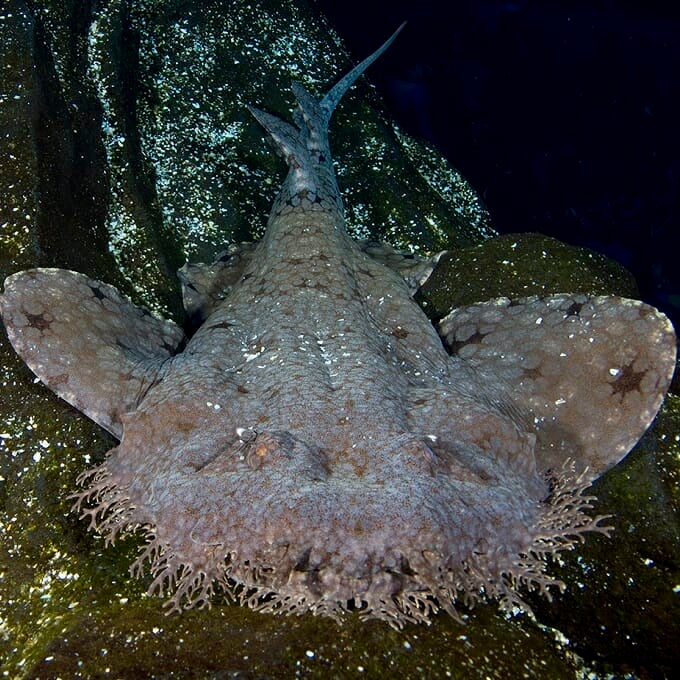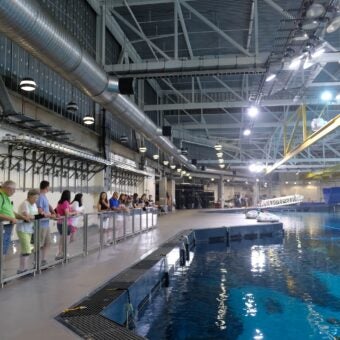-
Size
4.1 feet (1.2 m) -
Diet
Bottom-dwelling fish and invertebrates -
Range
Western Pacific Ocean -
Habitat
Ocean floor on the continental shelf and on offshore reefs
Physical Characteristics
- The maximum length of 4.1 feet (1.2 m).
- The head and body are flattened and the pectoral and pelvic fins are broad. Wide mouth; large crescent-shaped spiracle behind each eye.
- A fringe of branching skin flaps runs continuously from the pectoral fins around the front of the head forming a lace-like beard below the mouth.
- The back and fins are a brown to beige color with an intricate pattern of light and dark dots and rings. The ventral surface is a whitish-tan.
Animal Fact
The name "wobbegong", from the tasselled wobbegong, is Australian aboriginal in origin, but its exact meaning is unknown. It is speculated that it may mean "living rock."
Diet / Feeding
- Diet consists of bottom-dwelling fish and invertebrates.
- An ambush predator- lies motionless on the bottom blending into the reef structure until small fish or other prey moves within striking distance, then quickly opens its mouth to suck in the prey.
- Primarily feeds at night.
Range / Habitat
- Occurs in the Western Pacific, including Eastern Indonesia, New Guinea, and Northern Australia. Commonly observed on the Great Barrier Reef.
- Found near the ocean floor on the continental shelf and on offshore reefs.
Reproduction & Growth
- Ovoviviparous- fertilization of eggs occurs internally; young develop within the female and are born fully-formed.
Conservation Status
- “Least Concern” on the IUCN Red List.
Additional Information
- Master of camouflage; almost undetectable when resting quietly on the bottom.
- The name “wobbegong” is Australian aboriginal in origin, but its exact meaning is unknown. It is speculated that it may mean “living rock.”





